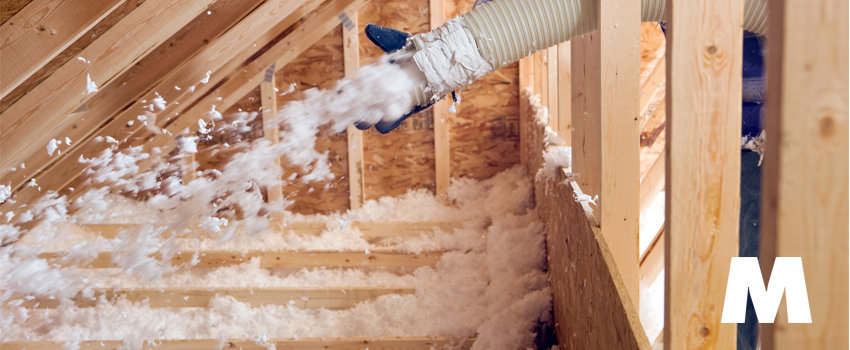You probably already know that good, reliable insulation is a smart bet for homes. Keeping your warm air tucked into your home in the winter and the hot air barricaded outside in the summer is a big part of how efficient your HVAC system is in providing comfort for you. Did you know that you can add insulation to your home to improve energy efficiency, HVAC system performance, and home comfort? Here’s what you need to know:
Does My Home Need More Insulation?
One of the most cost-effective ways to make your home more comfortable year-round and pad your energy bill in the process is to add insulation to your attic, including the attic trap or access door, which is relatively easy. To find out if you have enough attic insulation, measure the thickness of the insulation. If it is less than R-30 (11 inches of fiberglass or rock wool or 8 inches of cellulose), you could probably benefit by adding more.
If your attic has enough insulation and proper air sealing, and your home still feels drafty and cold in the winter or too warm in the summer, chances are you need to add insulation to the exterior walls. This is more expensive and usually requires a contractor, but it may be worth the cost. If you replace the exterior siding on your home, consider adding insulation at the same time to save the hassle.
Ensuring that you have the right amount of attic insulation is especially important because air leaks in your attic can lead to over-exertion on your HVAC system which will cause it to deteriorate faster and cost more to operate.
What Type of Insulation Do I Need?
You do not need to match the insulation you add to your attic to the insulation that is already present. Here’s some advice for adding insulation to your space:
Adding Fiberglass Batting or Blankets
Fiberglass batting or blankets are simple to work with so adding these to your attic is relatively easy to do. If you already have batts, it’s easy to add more. If you have loose-fill insulation, just be sure the batting you add to your attic is “unfaced” – meaning that it has no foil or paper backing to it.
Loose-Fill Insulation
Loose-fill insulation is usually made of fiberglass, rock wool, or cellulose in the form of loose fibers or fiber pellets. It should be blown into spaces using special pneumatic equipment and is therefore better to trust to a professional. The blown-in material conforms readily to odd-sized building cavities and attics with wires, ducts, and pipes, making it well suited for places where it is difficult to effectively install other types of insulation. We recommend using loose-fill, especially as an additional insulation additive, because it finds and seals holes in a way that flat batts cannot do.
If you find your home to be drafty or are concerned that you could be saving more on your energy bills, consider adding insulation to your home. For more energy savings and efficiency improvements to your home comfort regimen, consider also adding a routine HVAC maintenance plan. For that, contact McCullough at (512) 866-9821

